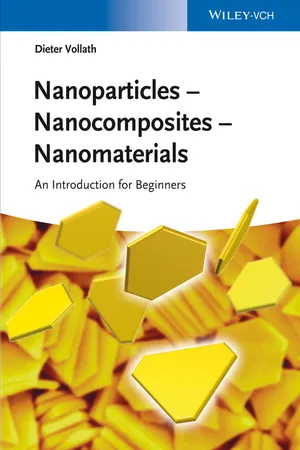Conductors
Conductors are materials that allow the flow of electric current. They typically have a high density of free electrons, which can move easily in response to an electric field. Common examples of conductors include metals like copper and aluminum. In electrical and electronic systems, conductors are essential for transmitting and distributing electricity.
6 Key excerpts on "Conductors"
- eBook - ePub
The Really Useful Book of Science Experiments
100 easy ideas for primary school teachers
- Tracy-ann Aston(Author)
- 2015(Publication Date)
- Routledge(Publisher)
...Experiment 40 Conductor or insulator? Learning Objectives: Test materials to see if they conduct electricity. Introduction: The children investigate which materials conduct electricity by testing them in a simple circuit. Useful Prior Work: The children should be able to build a simple series circuit. Background Science: An electric current is the flow of electrons. Electrons are one of the three sub-particles that make up atoms (the other two are protons and neutrons). Some materials allow electrons to flow through them easily. These materials are therefore able to ‘conduct’ electricity. Metals are an example of a conductor. On the other hand, an insulator does not allow these electrons to flow through them, therefore they are not able to conduct electricity. As a circuit needs to be complete in order to work, if an insulator is placed in the circuit, this will ‘break’ the circuit (even though there is no visible ‘gap’) as the current cannot flow through the insulator...
- eBook - ePub
Understanding Solids
The Science of Materials
- Richard J. D. Tilley(Author)
- 2021(Publication Date)
- Wiley(Publisher)
...11 Electronic Conductivity in Solids What is n‐type and p‐type silicon? How are conducting polymers produced? What is a cuprate superconductor? Solids that allow an electric current to flow when a small voltage is applied are called Conductors or semiConductors. Conductivity requires the presence of mobile charge carriers. In this chapter, solids that have reasonable numbers of mobile charge carriers present, either because of their native electronic properties, or because they have been deliberately introduced by doping, are considered. In addition, superConductors, a group of materials that appear not to use ‘normal’ conductivity mechanisms, are described. 11.1 Metals 11.1.1 Metals, SemiConductors, and Insulators One of the defining physical properties of a metal is its electrical conductivity, defined via Ohm's Law, where V is the voltage applied across the material, I is the resultant current, and R is the resistance. The resistance is proportional to the length of the material, L, and the cross‐sectional area, A : where ρ is the r esistivity. The resistivity of a solid is an intrinsic property, whereas resistance depends upon the dimensions of the sample. The conductivity of a solid is the inverse of the resistivity: Electrical conductivity in a metal is due to electrons that are free to move, i.e. gain energy, under the influence of an applied voltage. Metallic bonding allows conductivity to be understood most easily. In this model, the electrons on the atoms making up the solid are allocated to energy bands that run throughout the whole of the solid. A simple one‐dimensional band‐structure diagram, called a flat band diagram, allows the broad distinction between Conductors, semiConductors, and insulators to be understood. If the number of electrons available fills an energy band completely and the energy gap between the top of the filled band and the bottom of the next higher (empty) energy band is large, the material is an insulator (Figure 11.1 a)...
- eBook - ePub
Nanoparticles - Nanocomposites – Nanomaterials
An Introduction for Beginners
- Dieter Vollath(Author)
- 2013(Publication Date)
- Wiley-VCH(Publisher)
...10 Electrical Properties 10.1 Fundamentals of Electric Conductivity; Diffusive versus Ballistic Conductivity In a conventional metallic conductor, there is a huge number of electrons; after connecting a voltage, they move slowly from one to the other end of the wire. This is rather a drift than a directed movement. The electrons moving under the influence of an electrical field experience scattering processes leading to a change in momentum by interactions with electrons, phonons, impurities, or other imperfections of the lattice. These processes are responsible for the electric losses. Figure 10.1 displays these phenomena in a simplified way, where an Ohm ic conductor, for example, a metallic wire, is connected to an electric circuit, electrons are moving driven by the applied electric field. Figure 10.1 Electrical conduction mechanism in conventional metallic Conductors. Diffusive conductance, active in this case, is characterized by scattering of free electrons in the conductor. Electric current is transported by free electrons performing a drift movement. The conventional process of electric conductivity called “diffusive conductance” is ruled by Ohm 's law (10.1) In Eq. (10.1), the quantity V is the applied voltage, I the electrical current, R the resistance, and G the electrical conductance. The validity of Ohm 's law implies that the electrical resistance depends only on the geometry and material of the conductor. The conductance of a wire depends on the geometrical parameters l, the length, and a, the cross section:. The electric conductivity σ is a material parameter. For metallic Conductors the conductivity is independent of the applied voltage and the electric current, for semiConductors or insulators, the electric conductivity usually increases with increasing applied voltage. Wires with dimensions in the nanometer range or molecular dimensions do not follow Ohm 's law in any case...
- eBook - ePub
Materials
Engineering, Science, Processing and Design
- Michael F. Ashby, Hugh Shercliff, David Cebon(Authors)
- 2009(Publication Date)
- Butterworth-Heinemann(Publisher)
...There is a message here: even when you are designing cathedrals, electrical properties matter. This chapter is about the simplest of these: they relate to conduction, insulation and dielectric behaviour. Electrical conduction (as in lightning Conductors) and insulation (as in electric plug casings) are familiar properties. Dielectric behaviour may be less so. A dielectric is an insulator. It is usual to use the word ‘insulator’ when referring to its inability to conduct electricity, and to use ‘dielectric’ when referring to its behaviour in an electric field. Three properties are of importance here. The first, the dielectric constant (or relative permittivity), has to do with the way the material acquires a dipole moment (it polarises) in an electric field. The second, the dielectric loss factor, measures the energy dissipated when radio-frequency waves pass through a material, the energy appearing as heat (the principle of microwave cooking). The third is the dielectric breakdown potential, and this takes us back to York Minster. Lightning is dielectric breakdown, and it can be as damaging on a small scale—in a piece of electrical equipment, for example—as on a large one. There are many different kinds of electrical behaviour, all of them useful. Figure 14.1 gives an overview, with examples of materials and applications. The chapter introduces electrical properties and their physical origins, and examples of design for electrical performance. Figure 14.1 The hierarchy of electrical behaviour. The interesting ones are boxed in red, with examples of materials and applications. Their nature and origins are described in this chapter. 14.2 Conductors, insulators and dielectrics Resistivity and conductivity The electrical resistance R (units: ohms 1, symbol Ω) of a rod of material is the potential drop V (volts 2) across it, divided by the current i (amps 3) passing through it, as in Figure 14.2. This relationship is Ohm’s law: Figure 14.2 Electrical resistivity, ρ e...
- eBook - ePub
- Adrian Waygood(Author)
- 2018(Publication Date)
- Routledge(Publisher)
...Chapter 8 Conductors and cables Objectives On completion of this chapter, you should be able to identify, and state the function of, each of the main components of an electric cable. explain why some Conductors are stranded rather than solid. explain how the cross-sectional area of a stranded conductor may be determined. explain why the sectional shape of larger multicore cable Conductors are frequently ‘wedge’ shaped, rather than circular. list the main properties required of a cable’s insulation. explain the relationship between a cable’s length and the resistance of its insulation. identify the function of a cable conductor by the colour of its insulation. Introduction In the electrotechnology industry, ‘wires’ are more-properly called ‘ Conductors ’. A conductor may be solid or stranded, insulated or uninsulated. An electric cable normally consists of one or more metal current-carrying Conductors, each surrounded by a layer of insulation which, in turn, is usually covered by a tough outer protective sheath. In some cases, the cable may be further protected by metal tape or wire armour. In this chapter, we will confine our descriptions to to low- and medium-voltage cables used for the wiring of residential, commercial and industrial installations. The complicated construction of high-voltage underground cables requires extensive explanations based upon an understanding of electric fields which are beyond the level of this book. Conductors As already explained, in the electrotechnology industry, ‘wires’ are more-properly called ‘ Conductors ’. A cable may have one, two, three or more separately insulated Conductors. Each insulated conductor is called a core, and cables with more than one core are referred to as multicore cables (or, in North America, ‘multi-conductor’ cables). The very best metal conductor is silver which, because of its cost, is limited to special applications such as relay contacts, printed circuit boards, etc...
- eBook - ePub
- William A. Thue, William A. Thue(Authors)
- 2017(Publication Date)
- CRC Press(Publisher)
...3 Conductors Lauri J. Hiivala and Carl C. Landinger CONTENTS 3.1 Introduction 3.2 Material Considerations 3.2.1 Direct Current Resistance 3.2.2 Weight 3.2.3 Ampacity 3.2.4 Voltage Regulation 3.2.5 Short Circuits 3.2.6 Other Important Factors 3.3 Conductor Sizes 3.3.1 American Wire Gauge (AWG) 3.3.1.1 Shortcuts for Estimations 3.4 Circular Mil Sizes 3.5 Metric Designations 3.6 Stranding 3.6.1 Concentric Stranding 3.6.2 Compressed Stranding 3.6.3 Compact Stranding 3.6.4 Bunch Stranding 3.6.5 Rope Stranding 3.6.6 Sector Conductors 3.6.7 Segmental Conductors 3.6.8 Annular Conductors 3.6.9 Unilay Conductors 3.7 Physical and Mechanical Properties 3.7.1 Conductor Properties 3.7.1.1 Copper 3.7.1.2 Aluminum 3.7.1.3 Comparative properties, Copper versus Aluminum 3.7.2 Temper 3.7.2.1 Copper 3.7.2.2 Aluminum 3.8 Strand Blocking 3.9 Electrical Calculations 3.9.1 Conductor DC Resistance 3.9.2 Conductor AC Resistance 3.9.3 Skin Effect 3.9.4 Proximity Effect 3.9.5 Cables in Magnetic Metallic. Conduit 3.9.6 Resistance at Higher Frequencies References 3.1 INTRODUCTION The fundamental concern of power cable engineering is to transmit electrical current (power) economically and efficiently. The choice of the conductor material, size, and design must take into consideration such items as: • Ampacity (current carrying capacity) • Voltage stress at the conductor • Voltage regulation • Conductor losses • Bending radius and flexibility • Overall economics • Material considerations • Mechanical properties 3.2 MATERIAL CONSIDERATIONS There are several low resistivity (or high conductivity) metals that may be used as Conductors for power cables. Examples of these as ranked in order of increased resistivity at 20°C are shown in Table 3.1 [ 1 ]. Considering these resistivity figures and the cost of each of these materials, copper and aluminum become the logical choices...





